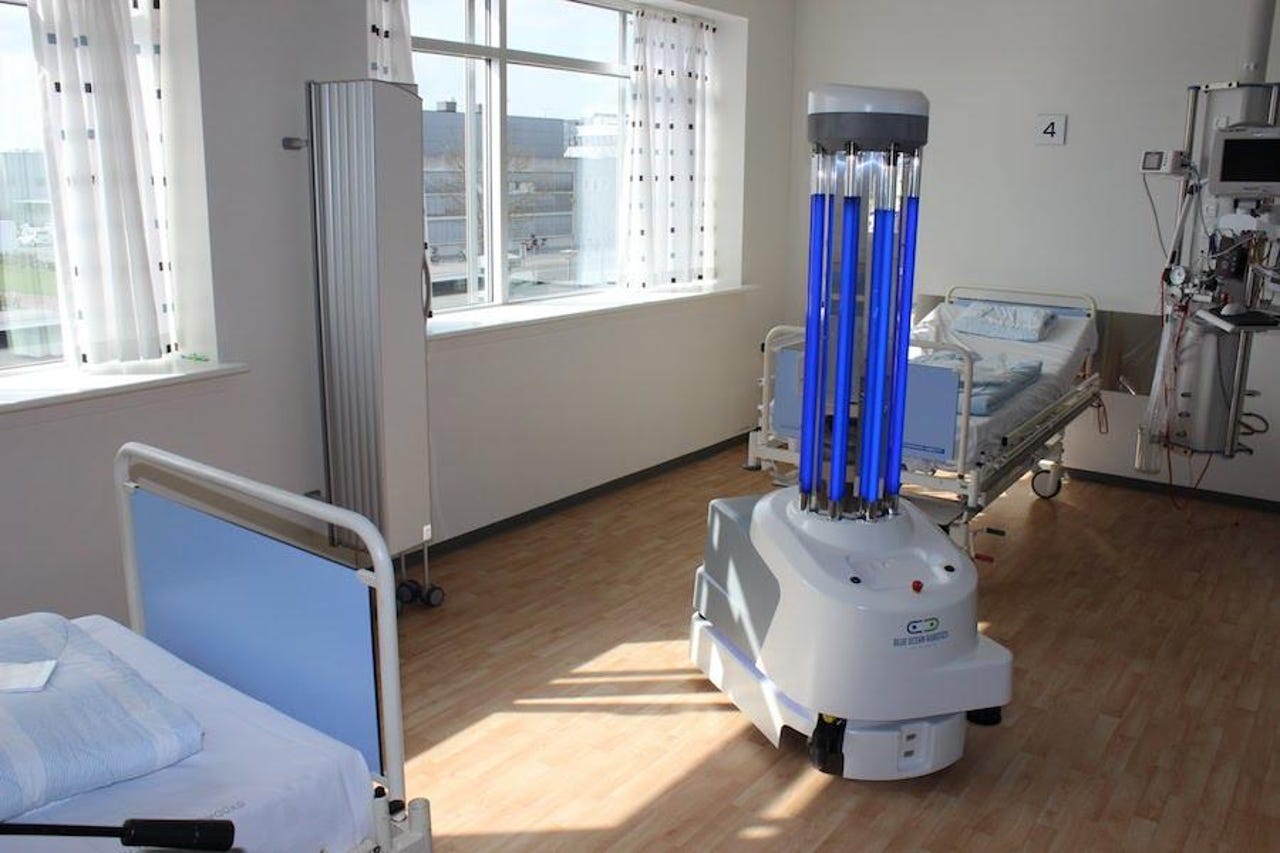Disinfecting robots to fight coronavirus run into travel bans


Medical professionals in China may soon deploy a new tool in the fight against coronavirus: disinfecting robots. The robots could help reduce the risk of hospital-acquired infections of the aggressive virus, which has sparked global fears and sweeping international travel restrictions.
A Danish company called UVD Robots has developed a disinfection robot emitting UVD light that can kill coronavirus. The robot drives around autonomously in a hospital (or other places where the virus could potentially be spreading), emitting UVD light with a germicidal effect that breaks down the virus' DNA. The technology has already proven effective on the SARS and MERS virus, which bear similarities to corona.
UVD Robots is a portfolio company of Blue Ocean Robotics. Last year it won the Innovation and Entrepreneurship Award in Robotics and Automation (IERA), also known as "the Oscars of robotics," for its autonomous disinfecting technology.
"The UV disinfection robot by Blue Ocean Robotics shows that robotics has a limitless potential of being applied in new environments," said Arturo Baroncelli at the time, former President of the International Federation of Robotics which co-sponsors the IERA award. "The combination of 'classical' mechatronic disciplines - typical of robotics – with the know-how of medicine and pharmacy is fantastic evidence of this path of progress. The IFR is happy to recognise and support this virtual trend."
Hospital-acquired infections (HAI) pose significant risk to patients as well as medical personnel, which was underscored by the infection-related death of Li Wenliang, a Chinese doctor who tried to raise the alarm about coronavirus in Wuhan.
In addition to being dangerous, HAI are costly. In the EU, the economic impact totals 7 billion euros. The source of infections can be other patients or staff and even equipment or the hospital environment. That's where the robot comes in. The UVD Robot navigates autonomously and treats surfaces in a hospital ward with light from several angles, killing up to 99.99% of bacteria as well as a number of common viruses.
A spokesperson tells me UVD Robots has received "significant interest from China, especially from hospitals in Wuhan, and expects to be able to sell the first UVD robots this week." But travel bans have made delivering critical supplies and technology challenging.
We'll update this article as delivery schedules become clearer.